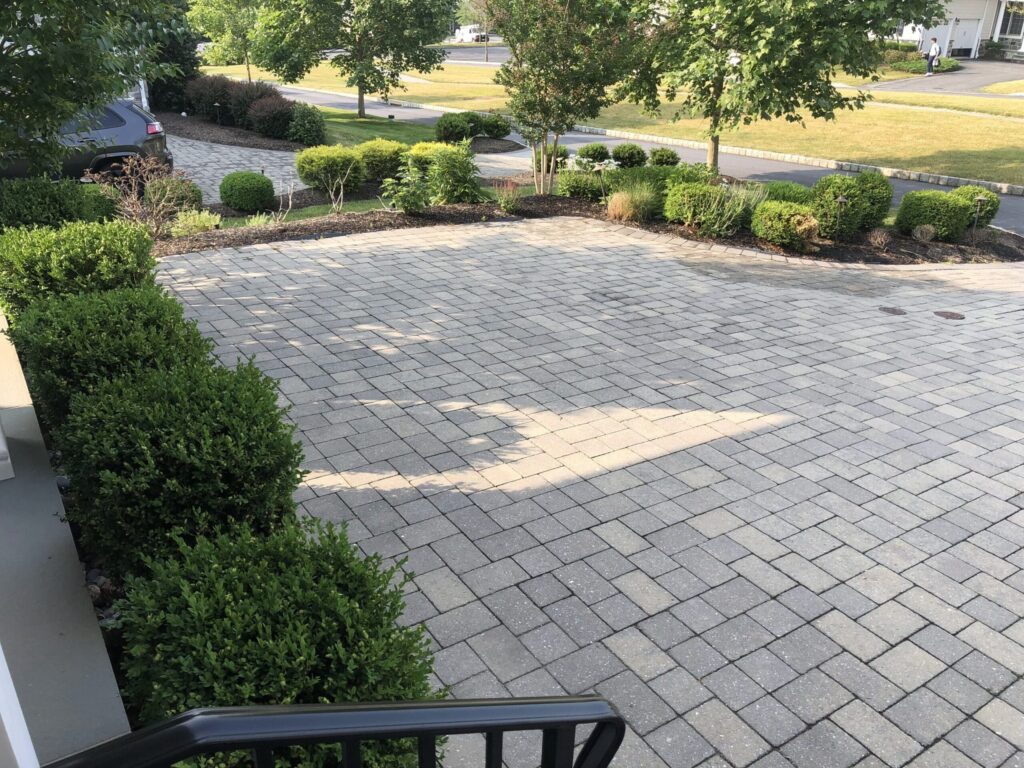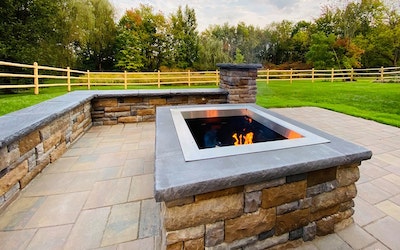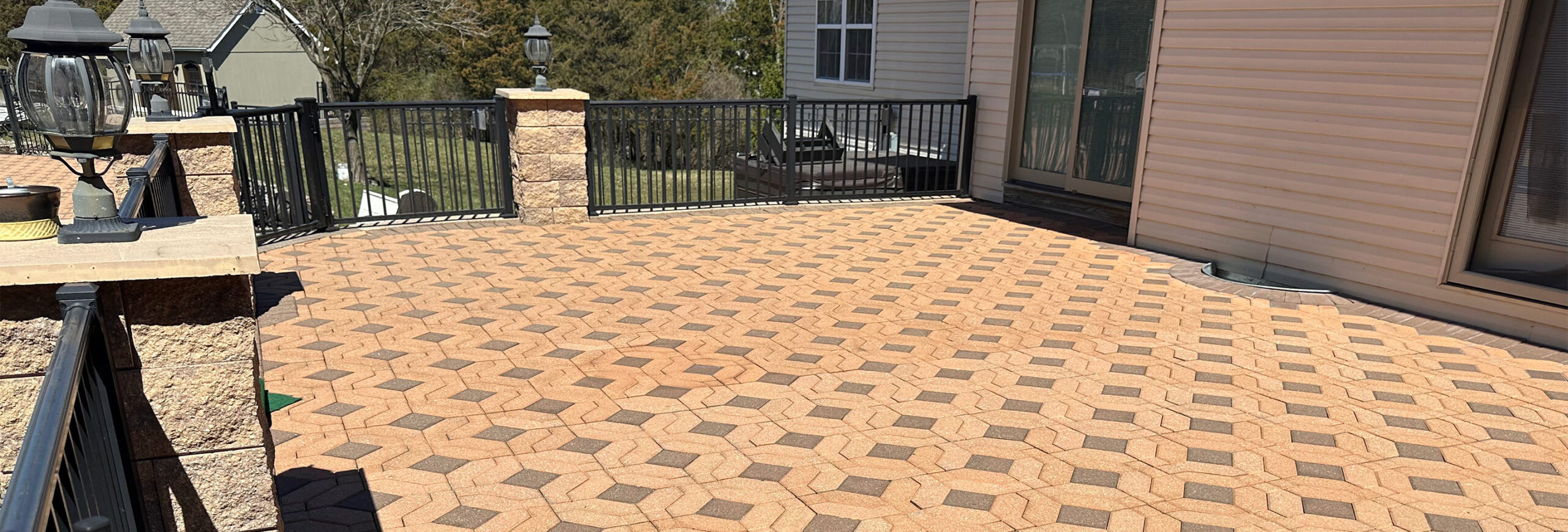Choosing the Right Pavers for Your Patio or Walkway: Wet Cast vs. Dry Cast

July 23, 2024
Are you gearing up to install a stunning new paver patio or walkway?
Choosing the right type of concrete paver is essential for ensuring both the aesthetic appeal and longevity of your outdoor space.
By understanding the differences between wet cast and dry cast pavers, you can make a confident, informed decision. Here’s a comprehensive guide to the key distinctions between these two popular types of pavers.
The Manufacturing Process

The primary difference between wet cast and dry cast pavers lies in their manufacturing processes.
Wet Cast Pavers
Wet cast concrete is a fluid mixture with a high slump, allowing it to be poured easily from a mixer, hopper or truck. This consistency is measured through a slump test, where the concrete is assessed by its ability to slump from an initial height.
To create wet cast pavers, the concrete is poured into molds and vibrated to eliminate air bubbles. Once cured, the molds are stripped away and the pavers are ready for shipping.
Dry Cast Pavers
On the other hand, dry cast concrete uses much less water and has a zero slump, resembling wet sand at the beach. This mix is only hydrated enough to initiate the cement’s chemical reaction. The dry cast manufacturing process involves compressing the concrete mix in molds under very high pressure.
These pavers are then cured on racks before being palletized and processed.
Texture, Color and Size

The manufacturing techniques of wet cast and dry cast pavers result in variations in texture, color and size.
Wet Cast Pavers
Wet cast pavers offer a wide range of textures and colors. They can achieve smooth finishes and intricate surface textures, often imitating natural stone. Pavers with bold colors like jet black or red are typically produced using the wet cast method.
Dry Cast Pavers
Historically, dry cast pavers had basic surface textures and colors. However, modern advancements have allowed for more sophisticated textures that mimic natural stone and multi-color blends. This makes dry cast pavers more versatile and visually appealing than in the past.
Strength and Durability

Both types of pavers are suitable for residential projects like walkways, pool decks and patios. However, their strength and durability can differ.
Wet Cast Pavers
Wet cast pavers are strong and durable, making them a good choice for residential applications.
Dry Cast Pavers
With an optimal water-to-cement ratio, dry cast pavers are exceptionally strong. Due to their high durability and load-bearing capacity, they are the preferred choice for large-scale commercial projects such as highways and roads.
Price Considerations
Wet cast pavers are generally more expensive than dry cast pavers. If budget constraints are a concern, dry cast pavers offer a more economical option without sacrificing quality.
Sealing Considerations

The surface porosity and absorption rates of pavers are essential factors, especially if you plan to seal them.
Wet Cast Pavers
These pavers often have a smooth, non-porous surface and are sometimes sealed at the factory, reducing the need for additional sealing.
Dry Cast Pavers
Dry cast pavers typically have a rougher, more porous surface, but their absorption can vary. Proper consideration of porosity and absorption is essential when applying a sealer.
Make Your Decision With CKC Landscaping
Both wet cast and dry cast pavers have unique advantages and are suitable for various applications. Understanding the differences in their manufacturing processes, textures, colors, strength and cost can help you choose the best paver for your project.
Whether you prefer the vibrant and intricate designs of wet cast pavers or the strength and economy of dry cast pavers, CKC Landscaping is here to help you create an outdoor space that your friends and your family will love for years to come.
For expert advice and professional paver installation, contact CKC Landscaping today!













